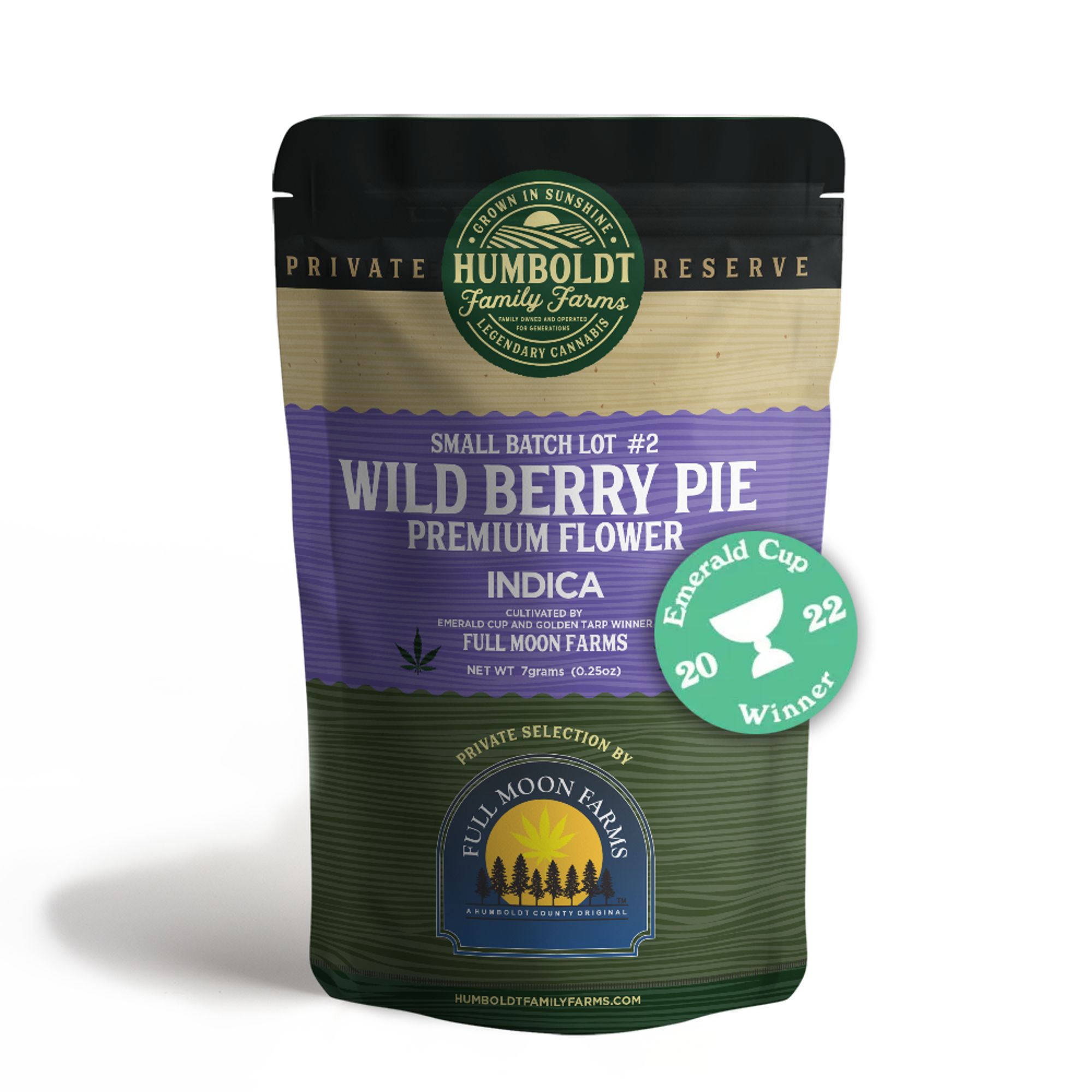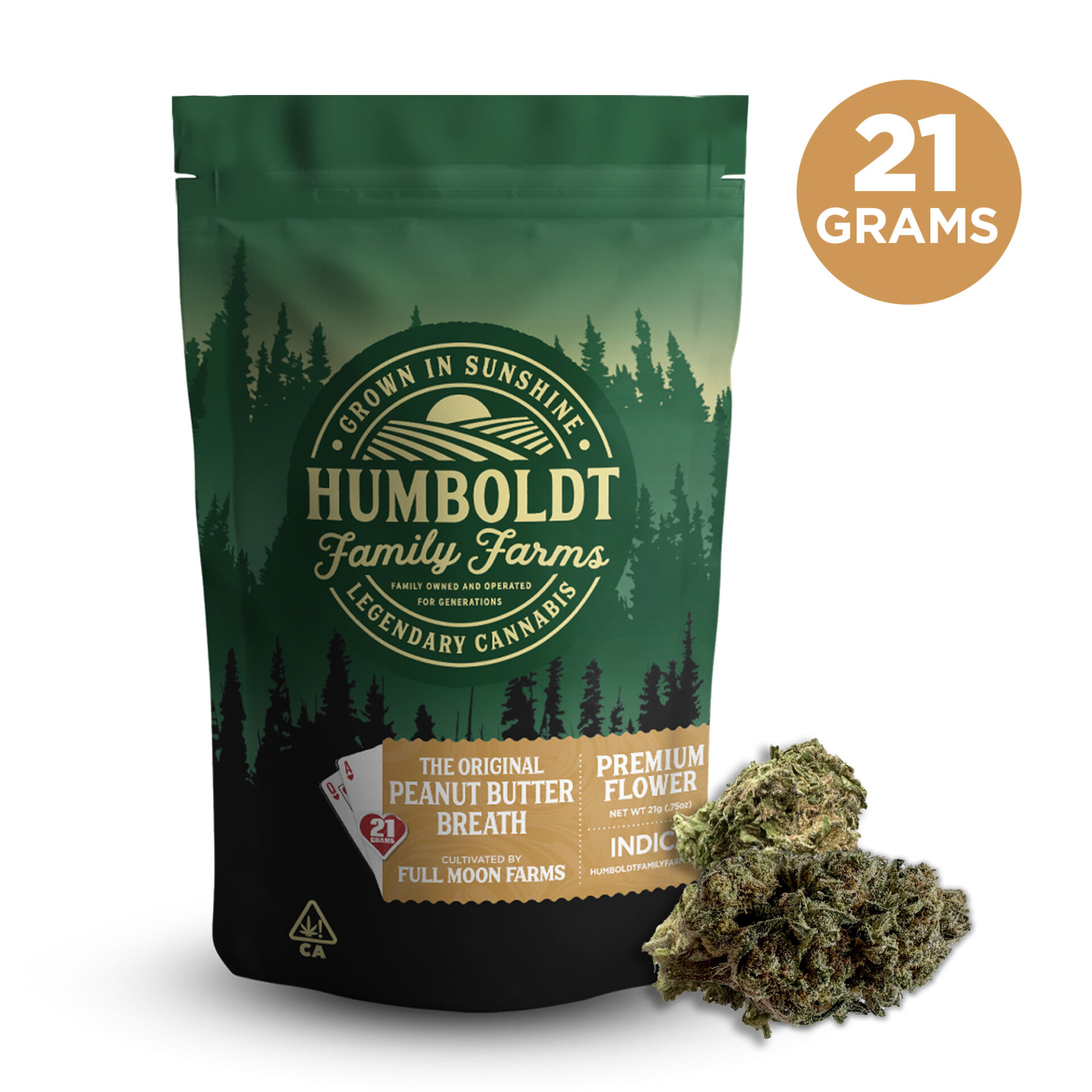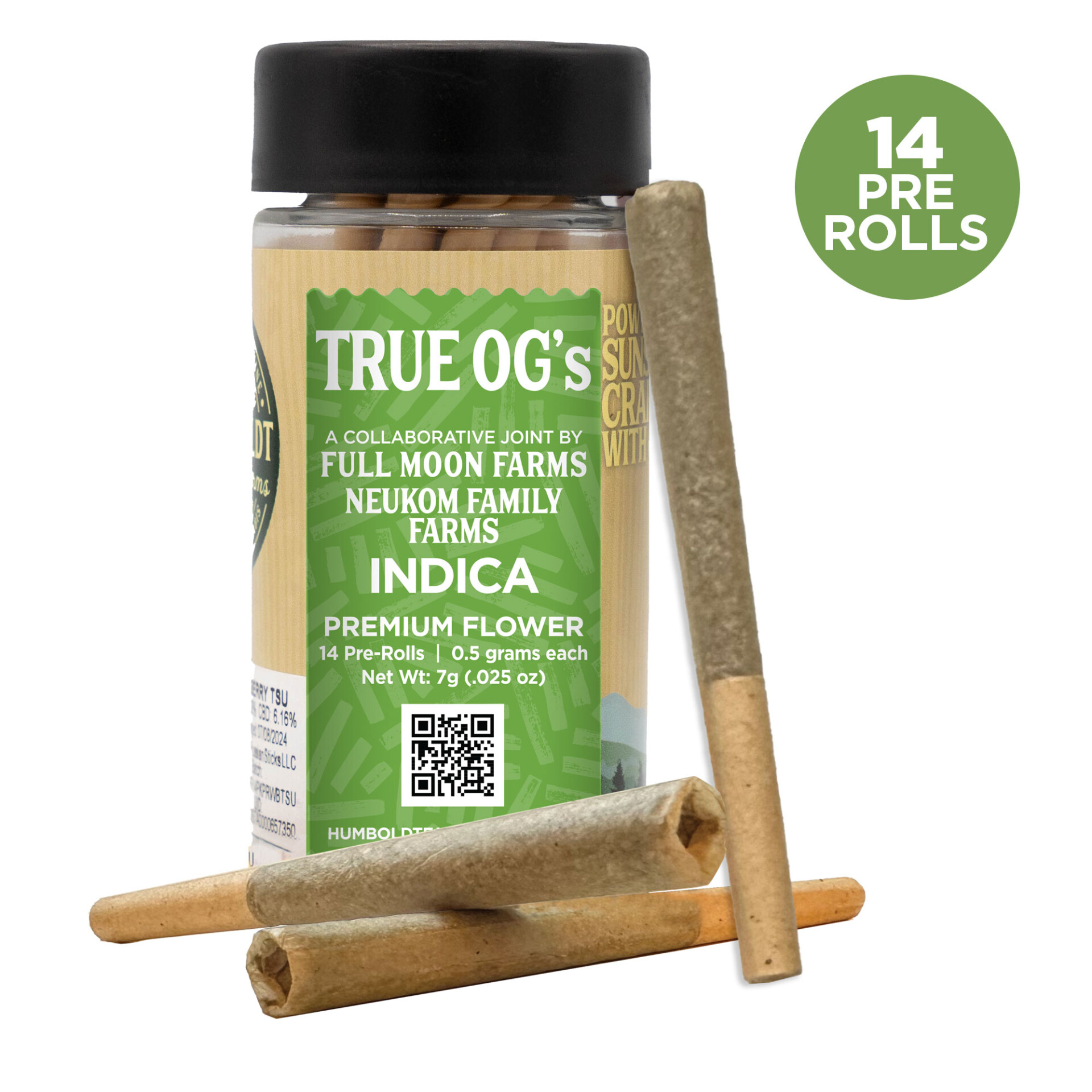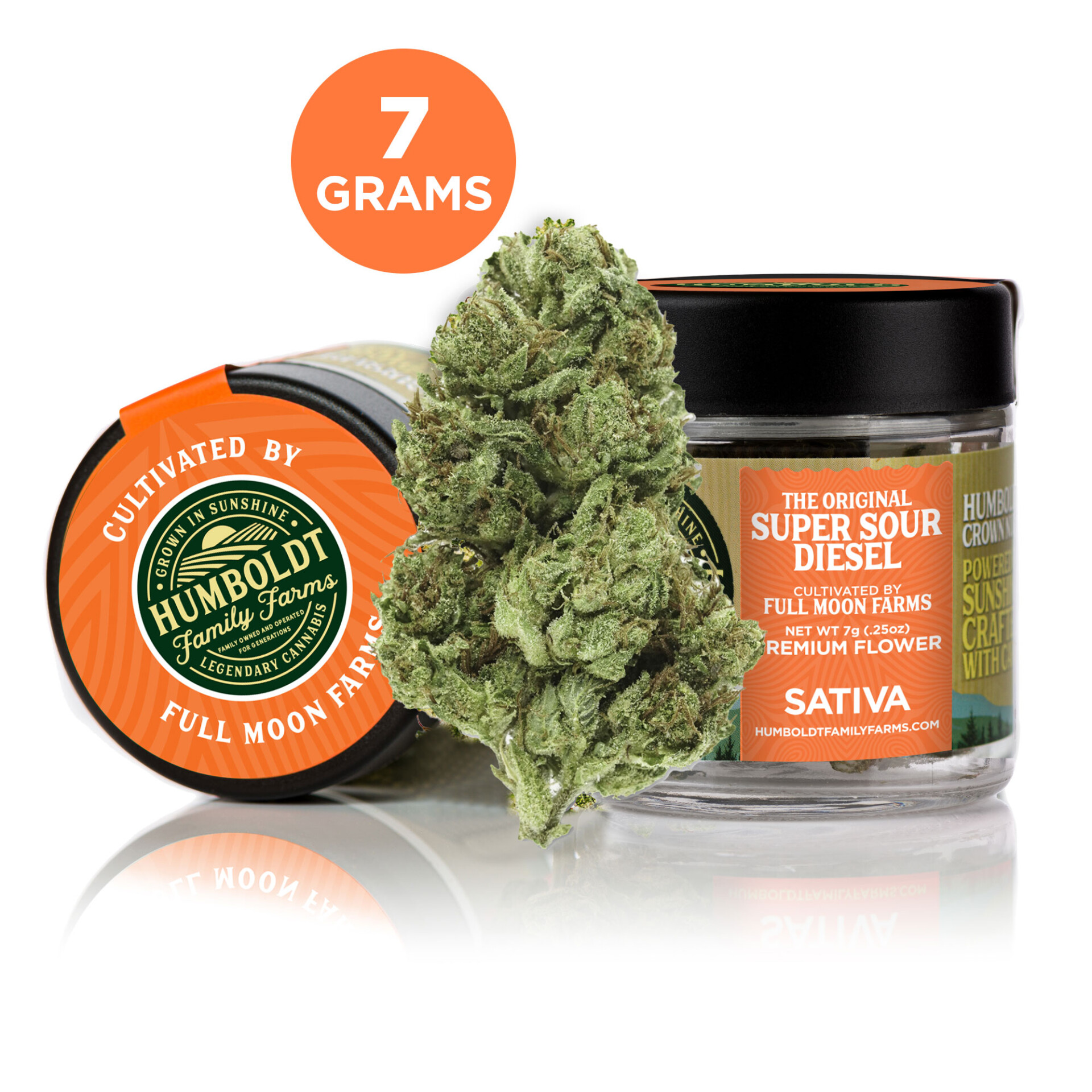![[Humboldt Family Farms] Featured Images (1920 x 1080 px) – 6 Nik Erickson](https://humboldtfamilyfarms.com/wp-content/uploads/2023/08/Humboldt-Family-Farms-Full-Moon-Farms-05-Large-1.jpeg)
Nik Erickson | Full Moon Farms
Nik’s family came to California in 1853, chasing gold. When it didn’t pan out, they moved to the Sierra Mountains in Plumas County and started ranching, farming, and logging. His family eventually expanded into Mendocino County and eventually Humboldt – all the while continuing to work with the land.
Nik grew up in Quincy, CA, and as a child, cannabis was a mainstay in their family garden. His dad and uncle grew it for personal use mostly, and the plants were tucked into the veggie beds like any other plants. But Nik’s earliest memory of his father’s cannabis cultivation was a traumatic one. He was just three years old when his dad’s farm was raided, and the memory of that day is seared into his mind forever.
Nik remembers swinging on the swingset that his dad had set up amongst the plants when the cops arrived. They trampled on the food that was growing in the garden to get to the cannabis plants that were mixed in. Nik couldn’t understand why they would do that. They needed that food, which didn’t make sense to him.
The warrant was bunk, and after that, Nik’s dad kept cannabis hidden. It would be years before they reunited over an eighth of Nik’s homegrown.
A Legacy in the Making
Nik learned about cultivation from his friend’s families. They took him under their wing, and he got a deep-dive education on how to work with the land and commune with the plants in their natural terroir. Yes – Humboldt County grows some fine herb, but it is not without intense labor and attention to detail.
Nik moved to Humboldt in 1993 and now lives on the infamously winding Highway 36, where you’ll find cannabis farms scattered across the hillsides. Once upon a time, these farms were tucked away for discretion, and the farmers who grew here did so in the dead of night. The name Full Moon Farms is a nod to this outlaw era.
![[Humboldt Family Farms] Featured Images (1920 x 1080 px) – 2](https://humboldtfamilyfarms.com/wp-content/uploads/2023/08/Humboldt-Family-Farms-Full-Moon-Farms-01-Large.jpeg)
Into the Light
Today, Full Moon Farms has three different grow sites, each in its own unique microclimate. As Nik says, “It’s the land of extremes.” One farm needs to be mindful of mold-prone genetics near the coastal climate, and another needs to get plants up and out of the hard pan clay rock by using raised beds. Overall – Full Moon juggles roughly 50 cultivars per season, which means dedicated teams at each location to ensure the plants produce craft-quality buds.
Selecting strains is a balancing act between market demand and pheno hunting for what will perform well in the microclimates. The market is so diverse, and part of the strain selection is catered to those trends. Yet, working with the climates is a much better approach.
“We’re terp chasers, not THC chasers” – Nik
One thing is for certain – Nik knows that growing cannabis under the California sunshine is one of the biggest contributors to their success. But choosing those genetics is also incredibly important.
“We pick and choose what works for the microclimates. We also run a lot of unknowns…we gotta keep new flavors coming in. We have some in-house breeding, but we also get unicorn cuts from friends that are breeders. They appreciate our quality, and they want to see their genetics expressed through us.” – Nik
![[Humboldt Family Farms] Featured Images (1920 x 1080 px) – 4](https://humboldtfamilyfarms.com/wp-content/uploads/2023/08/Humboldt-Family-Farms-Full-Moon-Farms-03-Large.jpeg)
Tricks of the Trade
One of the ways Full Moons Farms approaches cultivation is to start later in the season. While this might sound counterintuitive, there is a reason. By growing more plants yet keeping them intentionally smaller, the plants focus their energy on bud growth instead of mass. Nik likes to focus on what matters most – maintaining the plants – instead of chasing down problems.
“A lot of times, you can take something that looks generic as a 10-pound plant and grow a one-pound plant that looks incredible. Most of our plants are often six feet or less.” – Nik
Another way that Full Moon Farms works with its environment is by companion planting. Marigolds, comfrey, and hot peppers grow well in the native soil gardens and keep pests and rodents at bay. Yet, the entire area is biodynamic – ladybugs, lacewings, and praying mantis thrive naturally here. Red clover grows as a cover crop, also providing nitrogen to the soil. It’s a balanced, synergistic environment.
For genetics that fully mature later in the season, Nik employs greenhouses to protect the crops from frost and dipping fall temperatures. “We align our greenhouses with wind directions, so we have little need for fans and work solely with wind and sun patterns.”
They also use rain catchment systems and trap 100% of the rainfall they receive. There are nearly 450,000 gallons of rainwater among the three properties. One of the properties currently runs on off-the-grid solar, and they want to do the same with the other properties.
There are so many small acts that show tenderness toward working in harmony with nature and respecting its balance. For example, if a plant gets sick, they won’t remove it and destroy it out of fear of whole crop contamination. Instead, the plant stays to be a host as insects tend to gravitate towards the weakest of the bunch. Problem solved.
The continual efforts to work with sustainable, natural resources is a dedication to their craft. It’s a belief system that Full Moon Farms honors with integrity and deep respect for the land.
![[Humboldt Family Farms] Featured Images (1920 x 1080 px) – 3](https://humboldtfamilyfarms.com/wp-content/uploads/2023/08/Humboldt-Family-Farms-Full-Moon-Farms-02-Large.jpeg)
Collaboration and Research
Nik is currently working with Colin Nuckolls from Columbia University to explore the genetic profiles of various crops. The goal is to observe cultivars in various growing conditions and study the terpene and cannabinoid profiles. Nuckolls is sampling from sungrown farms, greenhouses, indoor operations, and even grabbing strains from dispensaries for comparison. The testing criteria are far beyond what the industry is currently observing.
The five-year study will look at over 200 terpenes and cannabinoids to get a complete and comprehensive look at what influences these outputs. Nuckolls knows thus far that sungrown cannabis produces terpene profiles nearly 100 times more robust than the other targets – with a longer shelf life. His research suggests that peak expression is near 24 months after harvest when stored and cured correctly. This means we can compare cannabis more closely to fine wines.
Looking back to the cultivation year, farmers can attribute the cultivar’s properties to the unique wind patterns, mild or intense summers, early winter, and other environmental factors.
Nik is hopeful that this study will shed light on the incredible fingerprinting of the Humboldt terroir, and, ultimately, shift market perspectives. Buyers often shop based on test results, but what if the results were more inclusive? And what if those terpene profiles told us more about the effects, not just the THC?
Another nod to a bygone era where weed was sold in such a simple fashion. You would open the bag, take a look and give it a sniff. Smells good, looks good, smoke it.
![[Humboldt Family Farms] Featured Images (1920 x 1080 px) – 5 Full Moon Farms](https://humboldtfamilyfarms.com/wp-content/uploads/2023/08/Humboldt-Family-Farms-Full-Moon-Farms-04-Large.jpeg)
Passion and Purpose
What keeps Nik going in an ever-changing, tumultuous market? For starters – it was never about the money. The green rush has come and gone, and yet, Full Moon Farms carries on.
“It’s the passion, purpose, and community. It’s about loving this plant and what it does. We do a lot of compassionate care work to get people off of opiates, out of their medicine cabinets, beating cancer, and defeating seizures. That’s my uplifting, moral compass throughout all of this. Everything else has been depressing and heavy and corporate and a financial struggle, but when you have people that reach out saying your medicine has improved their quality of life, you’re on the right track.” – Nik
Sungrown cannabis in its natural state requires a 6-7 month life cycle to really bring out the best in that plant. And when you’re talking full spectrum medicine, sungrown is where it’s at. You can’t force it under lights and expect the same outcome. It’s apples and oranges.
When asked what he thinks about indoor growers, Nik replied, “Indoor came around when the threat of aerial surveillance was going on, you couldn’t put plants out, and felt safer indoors. We don’t need to be in warehouses, we can go outdoors. We’re arguing over water and power already, why are we growing inside? We should be coming back out into the sun.”
Step into the light with sungrown cannabis by Full Moon Farms.
Premium FLOWER cultivated by FULL MOON FARMS
Premium Flower cultivated by FULL MOON FARMS

Emerald Cup Winner by Full Moon Farms. We are thrilled to offer our second Private Reserve choice and Emerald Cup winning strain Wild Berry Pie by Full Moon Farms. You will not be disappointed.

Golden Tarp winner by Full Moon Farms. This is our first Private Reserve release from the multiple award winning farm Full Moon Farms.











